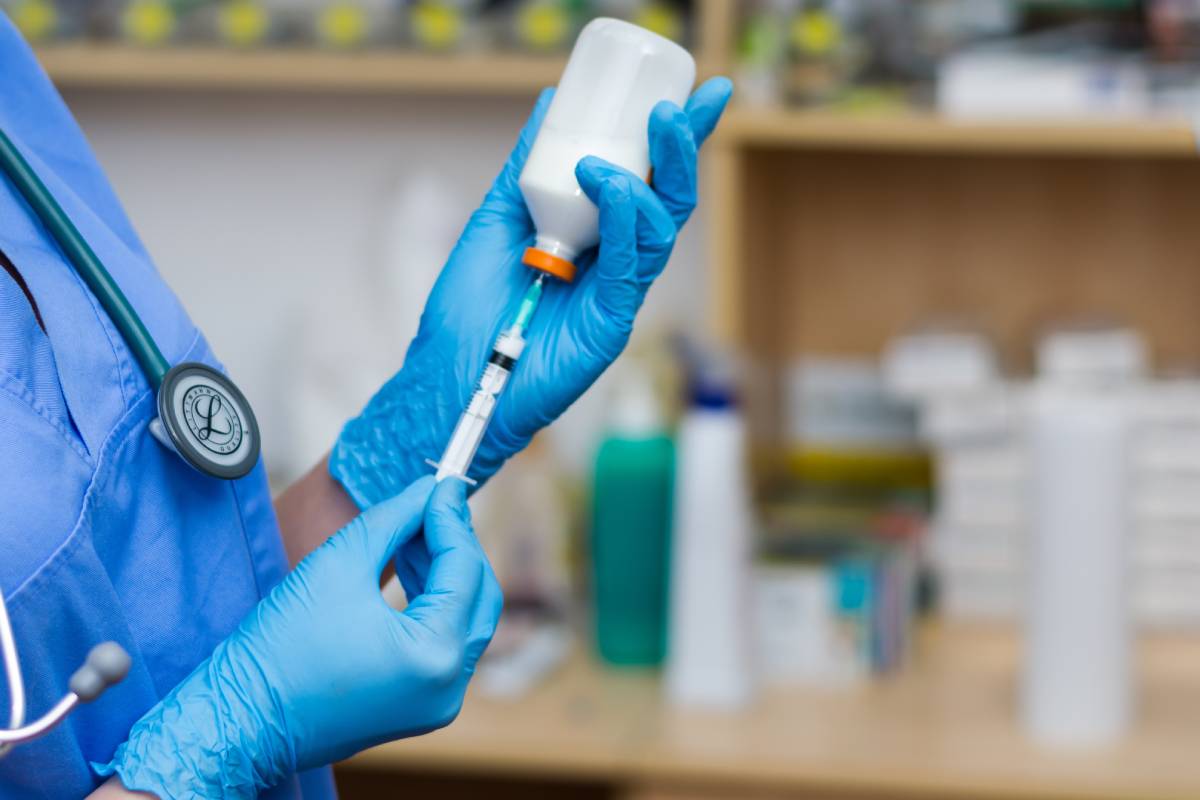Propofol Addiction Risk

Propofol is a sedative-hypnotic prescription medication widely used as an “induction agent” – the drug that causes loss of consciousness – for general anesthesia in major surgery (Wilson et al., 2010). When administered at lower doses, it is also used for “conscious sedation” of patients getting outpatient procedures at ambulatory surgery centers, putting people in a drowsy, semi-conscious state (Wehrwein, 2011). Since propofol suppresses breathing and lowers blood pressure like other sedating anesthetics, the breathing and heart functions of patients must be monitored constantly (Wehrwein, 2011). Among anesthesiology professionals, propofol has become the “induction agent of choice,” especially because the traditional agent (a barbiturate called sodium thiopental) is no longer available (Wehrwein, 2011). The U.S. Drug Enforcement Administration does not list propofol as a controlled substance, in part because it is not associated with physical dependency (Wilson et al., 2010). Consequently, the drug’s addictive potential has received little attention. Even so, the risk of propofol abuse and addiction among the general population has been highlighted in studies worldwide (Xiong et al., 2018; Kim et al., 2015).
In a review article published in 2010, three doctors in the Division of Emergency Medicine at the University of Utah cited pharmacological and experiential evidence to support propofol’s abuse potential (Wilson et al., 2010). The authors noted that volunteers in experimental studies described the drug’s effects “as a high or like being drunk,” and cited case reports that detailed “instances of sexual disinhibition” (Wilson et al., 2010; Wehrwein, 2011). As with other drugs of abuse, the pleasant feelings induced by propofol “can increase its risk for recreational use as well as addiction” (Kim et al., 2015). The review also mentioned that individuals can develop a tolerance for propofol, which necessitates needing more of the drug to achieve the same effect (Wilson et al., 2010). In a study published in the Journal of Addiction Medicine in 2013, Earley et al. analyzed 22 cases of propofol addiction in healthcare providers treated at an addiction center between 1990 and 2010. They found a “25% increase in admissions reporting propofol use, in each semi-decade, in the treatment groups,” demonstrating a potential trend towards increasing incidence of propofol abuse. The study also found that a majority of those treated for abuse were nurses and doctors that had been working in anesthetic departments and had ready access to the drug (Earley et al., 2013). Finally, animal studies have also substantiated the addiction risk of propofol: Gatch et al. established a rat model of the psychoactive effect of sub-anesthetic doses of propofol and found that propofol produces stimulus like known drugs of abuse (Gatch et al., 2011); there is also growing evidence that propofol can be self-administered (LeSage et al., 2000; Wang et al., 2016).
The death of pop music star Michael Jackson in 2009 shined a light on propofol abuse by the public, spurring an increase in research in the years that followed (Jeon, 2015; Wehrwein, 2011). Still, focus on the risk of propofol addiction remains in its preliminary stage, and the addictive characteristic of the drug remains up for debate among researchers. More clinical and experimental evidence could help determine addiction risk, while exploration into the modes of propofol addiction could help identify at-risk populations.
References
Earley, Paul H., and Torin Finver. “Addiction to Propofol: A Study of 22 Treatment Cases.” Journal of Addiction Medicine 7, no. 3 (June 2013): 169–76. https://doi.org/10.1097/ADM.0b013e3182872901.
Gatch, Michael B., and Michael J. Forster. “Behavioral and Toxicological Effects of Propofol.” Behavioural Pharmacology 22, no. 7 (October 2011): 718–22. https://doi.org/10.1097/FBP.0b013e32834aff84.
Jeon, Young-Tae. “Propofol as a Controlled Substance: Poison or Remedy.” Korean Journal of Anesthesiology 68, no. 6 (December 2015): 525–26. https://doi.org/10.4097/kjae.2015.68.6.525.
Kim, Eun-Jung, Seon-Hwa Kim, Yang-Jin Hyun, Yeon-Keun Noh, Ho-Sang Jung, Soon-Young Han, Chan-hye Park, Byung Moon Choi, and Gyu-Jeong Noh. “Clinical and Psychological Characteristics of Propofol Abusers in Korea: A Survey of Propofol Abuse in 38, Non-Healthcare Professionals.” Korean Journal of Anesthesiology 68, no. 6 (December 2015): 586–93. https://doi.org/10.4097/kjae.2015.68.6.586.
LeSage, M. G., D. Stafford, and J. R. Glowa. “Abuse Liability of the Anesthetic Propofol: Self-Administration of Propofol in Rats under Fixed-Ratio Schedules of Drug Delivery.” Psychopharmacology 153, no. 1 (December 2000): 148–54. https://doi.org/10.1007/s002130000430.
Wang, Benfu, Xiaowei Yang, Anna Sun, Lanman Xu, Sicong Wang, Wenxuan Lin, Miaojun Lai, Huaqiang Zhu, Wenhua Zhou, and Qingquan Lian. “Extracellular Signal-Regulated Kinase in Nucleus Accumbens Mediates Propofol Self-Administration in Rats.” Neuroscience Bulletin 32, no. 6 (October 25, 2016): 531–37. https://doi.org/10.1007/s12264-016-0066-1.
Wehrwein, Peter. “Propofol: The Drug That Killed Michael Jackson.” Harvard Health, November 7, 2011. https://www.health.harvard.edu/blog/propofol-the-drug-that-killed-michael-jackson-201111073772.
Wilson, Courtney, Peter Canning, and E. Martin Caravati. “The Abuse Potential of Propofol.” Clinical Toxicology (Philadelphia, Pa.) 48, no. 3 (March 2010): 165–70. https://doi.org/10.3109/15563651003757954.
Xiong, Ming, Nimisha Shiwalkar, Kavya Reddy, Peter Shin, and Alex Bekker. “Neurobiology of Propofol Addiction and Supportive Evidence: What Is the New Development?” Brain Sciences 8, no. 2 (February 22, 2018): 36. https://doi.org/10.3390/brainsci8020036.